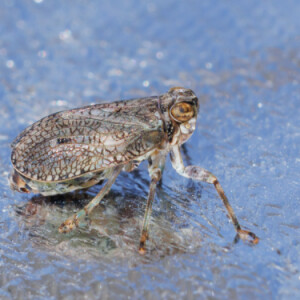Willughby
Ah - there you are! I've been waiting for you.
Having gone around the invertebrate calendar a few times now, I know that there are species whose arrival punctuates the season in a fairly predictable way, and I find myself looking out for them each year. Hairy-footed Flower Bees are an important one, obviously, because they mark the start of the invertebrate season. Likewise Large Red Damselflies - though this year has been quite weird, Large Red Damsel-wise, with emergences starting at the end of April and dribbling on until today, when I watched a teneral individual flutter up from the patio pond into the tall shrubs behind it. The small early butterflies such as Green Hairstreaks emerge in early May, along with Common Clubtails; Wool Carder bees are a mid-June species; Purple Emperors appear in early July and Migrant Hawkers usually by the middle of that month; and Colletes hederae, the last significant species of the year, emerges at the end of August or the beginning of September.
The Megachile leaf cutter bees are another marker species because they usually show up in early to mid July, at the same moment as the perennial pea bursts into flower. This year they were late though: the pea has been flowering for a fortnight, but I didn't see my first female Megachile until the end of last week. This lovely fresh individual is displaying the two-tone orange and black scopa (or pollen brush) on the underside of her abdomen that marks her out as a Megachile willughbiella. This species is the most commonly found leaf cutter bee across the southern half of Britain, and accounts for most of my garden records, though I have also found M. centuncularis and M. ligniseca in the village.
My second photo tonight is an adult Issus coleoptratus planthopper, which I beat from the ivy on the fence by the conservatory this morning. I said the last time I posted one of the nymphs that I'd be very pleased with myself if I ever managed to turn up an adult - and here we are. British Bugs gives the size as 3-4mm, which I'd say was about right for a nymph, but this adult was much bigger, at maybe 6-7mm in length. After taking a set of record shots, including this one, on the shiny side of a reflector, I gently encouraged the apparently passive planthopper back onto an ivy leaf, in the hope of getting some better photos of it within its environmental context. The massive leap it took when it spotted this escape opportunity shook the ivy, and startled me into dropping the reflector. Sometimes you just have to accept that you've been suckered, and laugh.


Comments
Sign in or get an account to comment.


